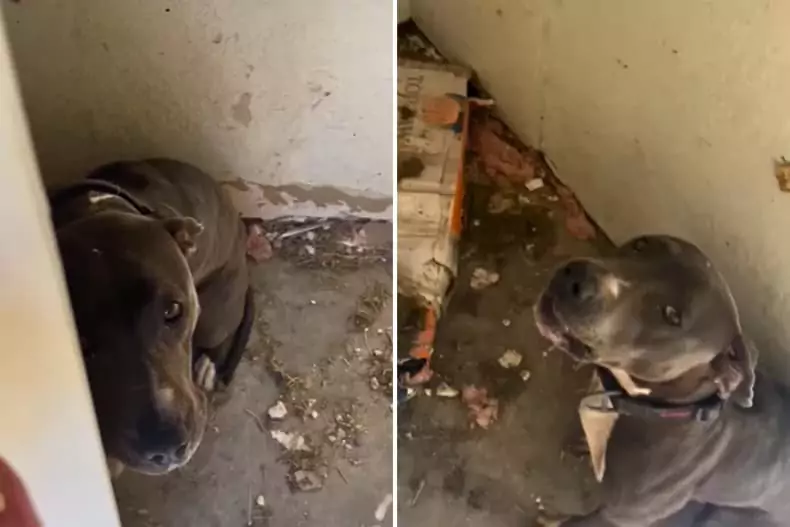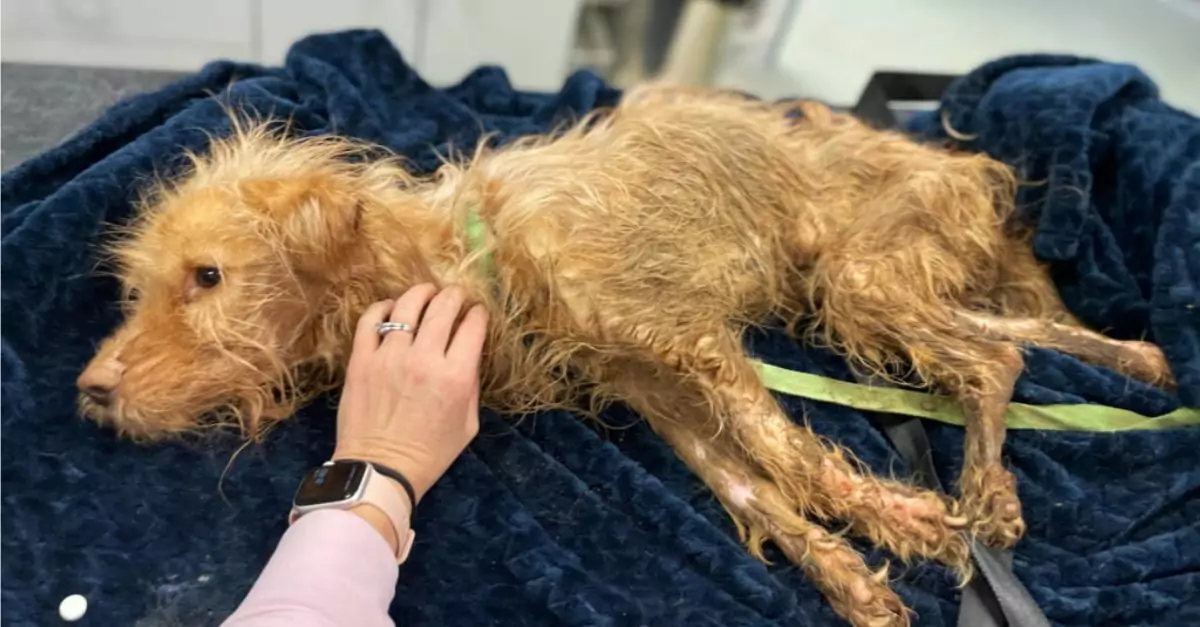A shocking incident involving the abandonment of a dog in Oklahoma County has ignited widespread outrage on social media. The heart-wrenching discovery made by Deputy Joe Hager of the Oklahoma County Sheriff’s Office has drawn attention to a troubling trend: the increasing abandonment of pets. This article delves into the details of this distressing case, the broader implications for animal welfare, and the urgent need for community action.

Dog Rescued After Family Left Her Locked in Small Room When They Moved Away
The Abandonment Incident: A Disturbing Reality
The case began when Deputy Hager responded to a distressing scene—a small 12-foot storage room where a dog was found locked inside. According to reports, the dog’s owners had moved out, leaving her all alone for several days without water or food. The Oklahoma police force shared the emotional footage on Facebook, illustrating the heartache faced by both the officer and the abandoned pet.
In a social media post, the sheriff’s office highlighted the difficulty officers encounter when dealing with cases of animal abandonment. “Deputy Joe Hager says this is one of the toughest parts of his job: When people abandon their pets,” the post stated. Community members quickly voiced their outrage, with comments flooding in from those deeply disturbed by the dog’s treatment. “Poor baby! This makes me so sad; I don’t understand how people can treat their animals this way,” one commenter lamented. The collective sentiment expressed online reflects a growing concern about the treatment of animals, emphasizing the need for increased awareness and action against such cruelty.
The Growing Crisis of Pet Abandonment
This tragic case is not isolated but rather part of a larger, alarming trend in the United States. Animal shelters nationwide are grappling with rising intake numbers, which have reached unprecedented levels. According to data from Shelter Animals Count, approximately 6.5 million animals entered shelters in 2023, marking a 4 percent increase from the previous year. A staggering 25 percent of these intakes involved animals relinquished by their owners. This influx contributes significantly to the overcrowding crisis that shelters face daily.
As the number of abandoned pets continues to rise, shelters are increasingly overwhelmed, struggling to provide the necessary care and resources for the animals in their charge. Many facilities report being at or beyond capacity, leading to heartbreaking decisions regarding the fate of the animals. The impact of abandonment extends far beyond the individual cases; it strains shelter resources and highlights the urgent need for community involvement in promoting responsible pet ownership.
Euthanasia Rates on the Rise
Compounding the issue is the alarming increase in euthanasia rates for animals in shelters. In 2022, approximately 850,000 animals were euthanized—an increase of 15 percent from the previous year. This tragic reality underscores the harsh consequences of pet abandonment and overpopulation in shelters. Despite the best efforts of animal shelters to promote adoption, implement spay-and-neuter programs, and offer behavioral rehabilitation, the escalating numbers of abandoned and surrendered pets create insurmountable challenges for many facilities.
One of the most heartbreaking aspects of this crisis is the sheer number of animals affected. Each statistic represents a life, a soul that has been discarded by those who once promised to care for them. While there have been successful rescue stories, such as Athena, a dog who was found emaciated and dehydrated but has since received the care she needs, these cases serve as stark reminders of the ongoing struggle faced by countless animals in need.
Community Action and Responsibility
As public awareness of these issues grows, so too does the need for community action. Local organizations and shelters are urging pet owners to take responsibility and consider the long-term commitment of pet ownership before acquiring a pet. Education plays a vital role in preventing abandonment. Programs that promote responsible pet ownership, offer resources for pet care, and encourage spaying and neutering can help mitigate the crisis.
Additionally, community members are encouraged to support local shelters through volunteering, donations, and adoption. Each small effort contributes to the larger goal of ensuring that every animal has a loving home and the care it deserves.
The Oklahoma County incident serves as a stark reminder of the harsh realities faced by abandoned animals and the urgent need for collective action. By raising awareness and advocating for responsible pet ownership, communities can work together to reduce the incidence of animal abandonment and improve the lives of countless pets in need. It is time for society to stand together against cruelty and ensure that no animal suffers the heartbreak of abandonment again.
















